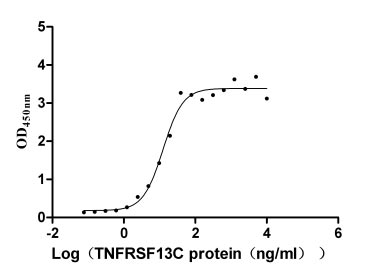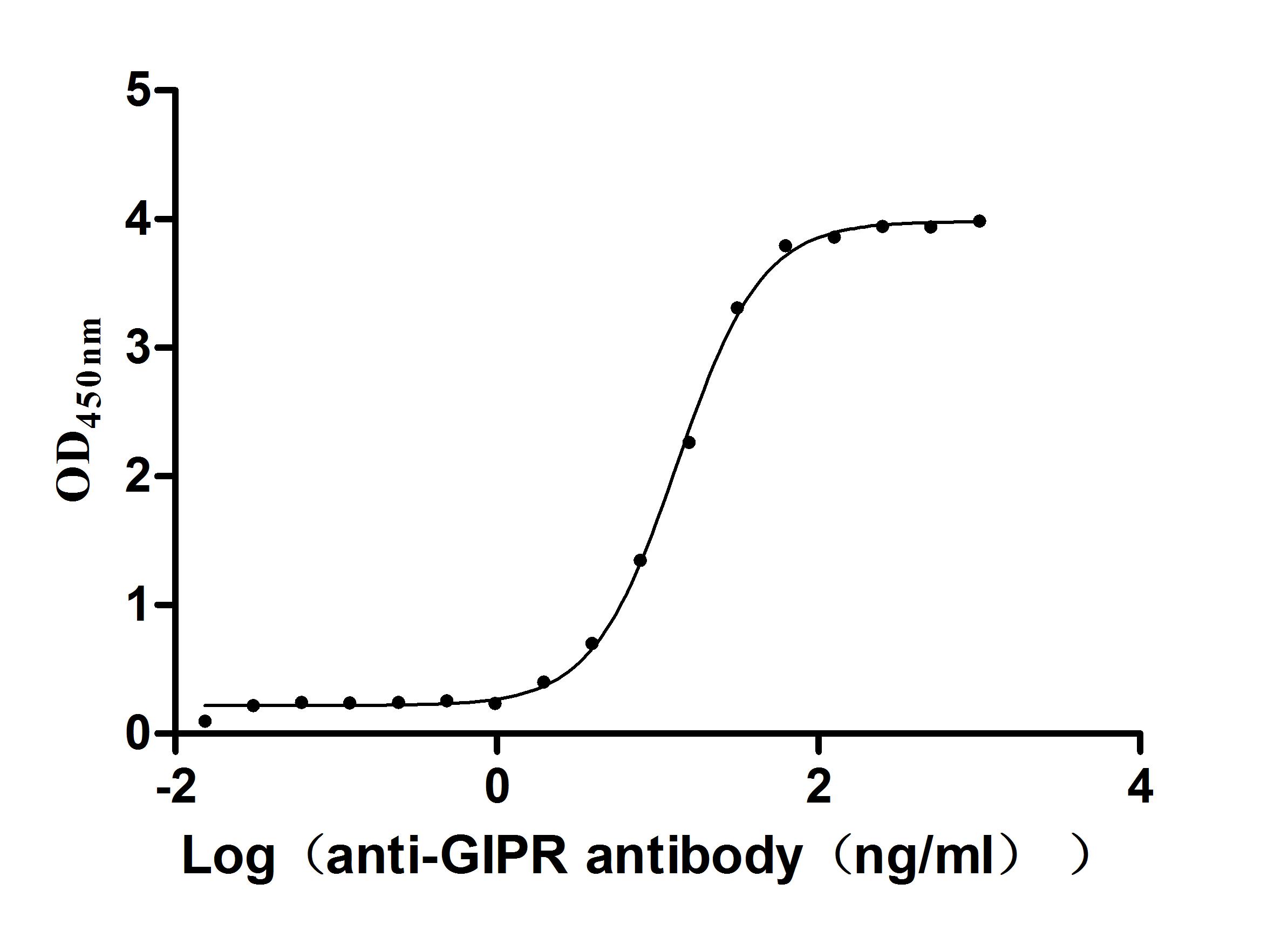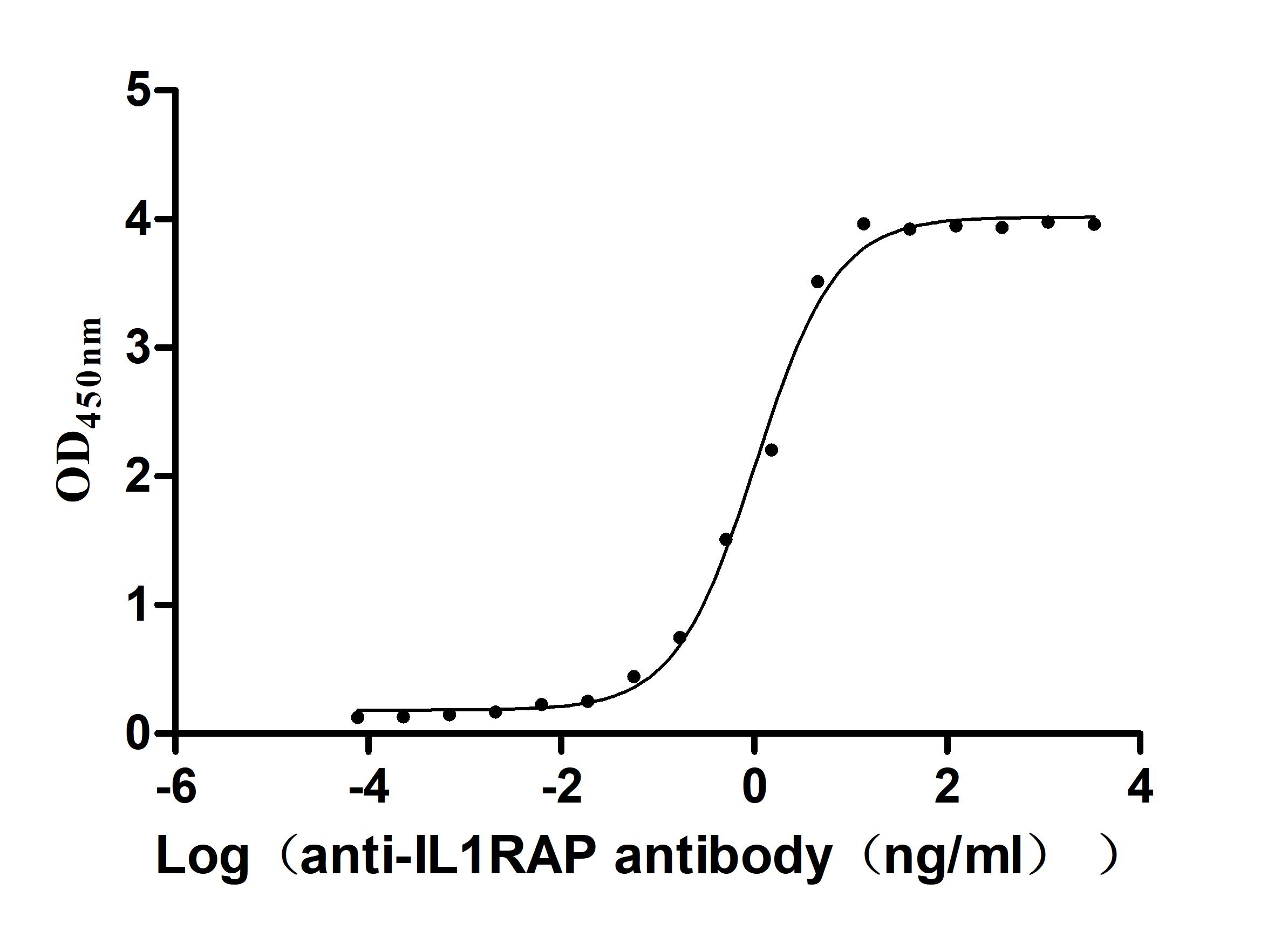Recombinant Mouse Trace amine-associated receptor 1 (Taar1), partial
-
中文名称:小鼠Taar1重组蛋白
-
货号:CSB-YP849748MO1
-
规格:
-
来源:Yeast
-
其他:
-
中文名称:小鼠Taar1重组蛋白
-
货号:CSB-EP849748MO1
-
规格:
-
来源:E.coli
-
其他:
-
中文名称:小鼠Taar1重组蛋白
-
货号:CSB-EP849748MO1-B
-
规格:
-
来源:E.coli
-
共轭:Avi-tag Biotinylated
E. coli biotin ligase (BirA) is highly specific in covalently attaching biotin to the 15 amino acid AviTag peptide. This recombinant protein was biotinylated in vivo by AviTag-BirA technology, which method is BriA catalyzes amide linkage between the biotin and the specific lysine of the AviTag.
-
其他:
-
中文名称:小鼠Taar1重组蛋白
-
货号:CSB-BP849748MO1
-
规格:
-
来源:Baculovirus
-
其他:
-
中文名称:小鼠Taar1重组蛋白
-
货号:CSB-MP849748MO1
-
规格:
-
来源:Mammalian cell
-
其他:
产品详情
-
纯度:>85% (SDS-PAGE)
-
基因名:
-
Uniprot No.:
-
别名:Taar1; Ta1; Tar1; Trar1; Trace amine-associated receptor 1; TaR-1; Trace amine receptor 1
-
种属:Mus musculus (Mouse)
-
蛋白长度:Partial
-
蛋白标签:Tag type will be determined during the manufacturing process.
The tag type will be determined during production process. If you have specified tag type, please tell us and we will develop the specified tag preferentially. -
产品提供形式:Lyophilized powder
Note: We will preferentially ship the format that we have in stock, however, if you have any special requirement for the format, please remark your requirement when placing the order, we will prepare according to your demand. -
复溶:We recommend that this vial be briefly centrifuged prior to opening to bring the contents to the bottom. Please reconstitute protein in deionized sterile water to a concentration of 0.1-1.0 mg/mL.We recommend to add 5-50% of glycerol (final concentration) and aliquot for long-term storage at -20℃/-80℃. Our default final concentration of glycerol is 50%. Customers could use it as reference.
-
储存条件:Store at -20°C/-80°C upon receipt, aliquoting is necessary for mutiple use. Avoid repeated freeze-thaw cycles.
-
保质期:The shelf life is related to many factors, storage state, buffer ingredients, storage temperature and the stability of the protein itself.
Generally, the shelf life of liquid form is 6 months at -20°C/-80°C. The shelf life of lyophilized form is 12 months at -20°C/-80°C. -
货期:Delivery time may differ from different purchasing way or location, please kindly consult your local distributors for specific delivery time.Note: All of our proteins are default shipped with normal blue ice packs, if you request to ship with dry ice, please communicate with us in advance and extra fees will be charged.
-
注意事项:Repeated freezing and thawing is not recommended. Store working aliquots at 4°C for up to one week.
-
Datasheet :Please contact us to get it.
相关产品
靶点详情
-
功能:Receptor for trace amines, including beta-phenylethylamine (b-PEA), p-tyramine (p-TYR), octopamine and tryptamine, with highest affinity for b-PEA and p-TYR. Unresponsive to classical biogenic amines, such as epinephrine and histamine and only partially activated by dopamine and serotonin. Trace amines are biogenic amines present in very low levels in mammalian tissues. Although some trace amines have clearly defined roles as neurotransmitters in invertebrates, the extent to which they function as true neurotransmitters in vertebrates has remained speculative. Trace amines are likely to be involved in a variety of physiological functions that have yet to be fully understood. The signal transduced by this receptor is mediated by the G(s)-class of G-proteins which activate adenylate cyclase.
-
基因功能参考文献:
- These results indicate that activation of TAAR1 potentiates MA-induced hypothermia and TAAR1 confers sustained neuroprotection dependent on its thermoregulatory effects. PMID: 28919515
- The Taar1 gene is within a mouse chromosome 10 quantitative trait locus for methamphetamine consumption, and TAAR1 function determines sensitivity to aversive effects of methamphetamine that may curb intake PMID: 27055611
- SNP-induced changes in mouse TAAR1 function PMID: 27031617
- Behavioral and physiological studies indicate that TAAR1 function increases sensitivity to aversive effects of Methamphetamine, and may thereby protect against Methamphetamine use. PMID: 25740289
- This study demonstrated that TAAR1 Modulates Cortical Glutamate NMDA Receptor Function in mouse. PMID: 25749299
- This study report that TAAR1 potentiates the degeneration of dopaminergic neurons and attenuates the behavioral response to l-DOPA and presynaptic and postsynaptic glutamate neurotransmission in the striatum. PMID: 26468205
- These data demonstrate supersensitivity of postsynaptic D2 dopamine receptors in the striatum of TAAR1-KO mice and indicate that a close interaction of TAAR1 and D2 dopamine receptors. PMID: 25721394
- The data of this study indicated that apomorphine activity at TAAR1 contributes to some behavioral manifestations, particularly climbing. PMID: 24925023
- This study demonistrar=ted that Taar1-mediated modulation of presynaptic dopaminergic neurotransmission: role of D2 dopamine autoreceptors. PMID: 24565640
- These observations confirm the modulatory role of TAAR1 on monoamine activity and suggest that in vivo the receptor is either constitutively active and/or tonically activated by ambient levels of endogenous agonists PMID: 22763617
- Data show that TAARs were expressed only at trace amounts in most of the tissues, the exceptions being TAAR1 in stomach and testis and TAAR8a in intestine, spleen, and testis. PMID: 22442117
- Data support that TAAR1 tonically activates inwardly rectifying K(+) channels, which reduces the basal firing frequency of dopamine neurons in the ventral tegmental area. PMID: 19892733
- Expression of neuronal trace amine-associated receptor (Taar) mRNAs in leukocytes. PMID: 17900709
- Trace amine-associated receptor 1 (TAAR1) activity decreases the spontaneous firing rate of dopaminergic neurons in the ventral tegmental area. PMID: 18083911
- Previous studies reported TAAR expression in brain. This paper found TAAR expression only in olfactory epithelial cells and that each TAAR detects a unique set of amine ligands. TAARs seem to function as a family of chemosensory receptors for amines. PMID: 16878137
显示更多
收起更多
-
亚细胞定位:Cell membrane; Multi-pass membrane protein.
-
蛋白家族:G-protein coupled receptor 1 family
-
组织特异性:Widely distributed throughout the brain. Strongly expressed in the mitral cell layer of the olfactory bulb, piriform cortex, the arcuate, motor, and mesencephalic trigeminal nuclei, lateral reticular and hypoglossal nuclei, cerebellar Purkinje cells, and
-
数据库链接:
KEGG: mmu:111174
STRING: 10090.ENSMUSP00000049527
UniGene: Mm.377141
Most popular with customers
-
Express system: Mammalian cell
Species: Homo sapiens (Human)
-
Recombinant Human T-cell surface protein tactile (CD96), partial (Active)
Express system: Mammalian cell
Species: Homo sapiens (Human)
-
Recombinant Human Killer cell immunoglobulin-like receptor 3DL2 (KIR3DL2), partial (Active)
Express system: Mammalian cell
Species: Homo sapiens (Human)
-
Recombinant Human Myosin regulatory light chain 12B(MYL12B) (Active)
Express system: E.coli
Species: Homo sapiens (Human)
-
Recombinant Human Transmembrane 4 L6 family member 1(TM4SF1)-VLPs (Active)
Express system: Mammalian cell
Species: Homo sapiens (Human)
-
Recombinant Macaca Gastric inhibitory polypeptide receptor(GIPR), partial (Active)
Express system: yeast
Species: Macaca fascicularis (Crab-eating macaque) (Cynomolgus monkey)
-
Express system: Mammalian cell
Species: Homo sapiens (Human)
-
Recombinant Macaca fascicularis Interleukin 1 receptor accessory protein(IL1RAP), partial (Active)
Express system: Mammalian cell
Species: Macaca fascicularis (Crab-eating macaque) (Cynomolgus monkey)



-AC1.jpg)
















